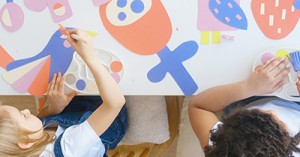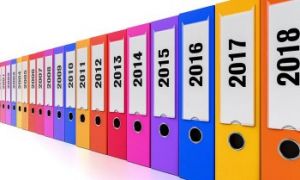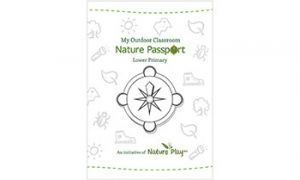A: In early childhood education, programming isn’t just about planning activities—it’s about tuning into children’s rhythms, honouring their voices, and creating emotionally safe, meaningful learning journeys. One of the most common questions is:
“Should I plan daily or weekly?"
The truth is, there’s no one-size-fits-all answer, and that’s a good thing. Your approach will depend on your service’s philosophy, your room’s energy, and the unique needs of your children and team.
This guide breaks down the difference between weekly and daily programming styles, with practical examples, reflective prompts, and flexible options to help you find your rhythm—or co-create one that evolves with your context.
Daily Programming
Daily programming suits highly responsive environments, especially infant/toddler rooms, trauma-informed settings, or services prioritizing relational pedagogy.
Key Benefits:
- Immediate responsiveness: Adapt to children’s cues, moods, and needs in real time
- Micro-moments matter: Capture fleeting interests and spontaneous learning
- Child-led and emotionally attuned: Ideal for co-regulation, sensory needs, and attachment-based practice
Common Structure:
- Quick daily plan or reflection (often co-authored with children)
- Flexible experiences based on that day’s observations
- Visual documentation (e.g., floorbooks, photo walls, storyboards)
- Often paired with daily rituals or inquiry questions
Reflective Prompts:
- What did the children show me today that surprised or moved me?
- How did I respond to emotional cues or sensory needs?
- What stories are unfolding in our space, and how can I honour them?
Weekly Programming
Most services use weekly programming as a base. It offers a structured yet flexible framework that supports:
Key Benefits:
- Extended observation windows: Notice emerging patterns, group dynamics, and sustained interests over time
- Integrated planning: Blend intentional teaching with spontaneous play
- Manageability: Easier to balance with documentation, compliance, and team collaboration
- Continuity: Supports deeper learning and revisiting concepts across the week
Common Structure:
- Weekly plan with 3–5 key experiences or provocations
- Daily reflections or jottings to track engagement and shifts
- Mid-week adjustments based on children’s responses
- Optional “focus child” cycles or learning stories embedded
Reflective Prompts:
- What themes or interests are recurring across the week?
- Are all children’s voices and cultures represented in the plan?
- How does the weekly rhythm support emotional safety and predictability?
Use Your Judgement
There’s no one-size-fits-all. Responsive programming is a living practice shaped by your team’s philosophy, the children’s rhythms, and your community’s needs.
You might:
- Use a weekly plan with daily tweaks
- Document daily but plan weekly
- Shift between styles seasonally or based on room transitions
- Co-design rhythms with your team and families
Guiding Principles:
- Responsive: Reflects real-time observations and children’s voices
- Authentic: Anchored in relationships, culture, and emotional safety
- Safe: Supports well-being, regulation, and inclusive practice
Whether you lean toward weekly structure or daily responsiveness or dance between both what matters most is that your programming reflects the heart of your practice: relationships, responsiveness, and respect for children’s voices.
Programming isn’t just paperwork. It’s a living, breathing reflection of your values, your team’s culture, and the stories unfolding in your space. Trust your instincts, collaborate with your colleagues, and stay curious.
Further Reading
2 Hours Per Week Programming Time Mandatory For Educators
Step-by-Step Guide To EYLF Programming and Planning
List Of Reflection Questions For Programming and Planning
Programming and Planning For Babies







 Here is the list of the EYLF Learning Outcomes that you can use as a guide or reference for your documentation and planning. The EYLF
Here is the list of the EYLF Learning Outcomes that you can use as a guide or reference for your documentation and planning. The EYLF The EYLF is a guide which consists of Principles, Practices and 5 main Learning Outcomes along with each of their sub outcomes, based on identity,
The EYLF is a guide which consists of Principles, Practices and 5 main Learning Outcomes along with each of their sub outcomes, based on identity, This is a guide on How to Write a Learning Story. It provides information on What Is A Learning Story, Writing A Learning Story, Sample
This is a guide on How to Write a Learning Story. It provides information on What Is A Learning Story, Writing A Learning Story, Sample One of the most important types of documentation methods that educators needs to be familiar with are “observations”. Observations are crucial for all early childhood
One of the most important types of documentation methods that educators needs to be familiar with are “observations”. Observations are crucial for all early childhood To support children achieve learning outcomes from the EYLF Framework, the following list gives educators examples of how to promote children's learning in each individual
To support children achieve learning outcomes from the EYLF Framework, the following list gives educators examples of how to promote children's learning in each individual Reflective practice is learning from everyday situations and issues and concerns that arise which form part of our daily routine while working in an early
Reflective practice is learning from everyday situations and issues and concerns that arise which form part of our daily routine while working in an early Within Australia, Programming and Planning is reflected and supported by the Early Years Learning Framework. Educators within early childhood settings, use the EYLF to guide
Within Australia, Programming and Planning is reflected and supported by the Early Years Learning Framework. Educators within early childhood settings, use the EYLF to guide When observing children, it's important that we use a range of different observation methods from running records, learning stories to photographs and work samples. Using
When observing children, it's important that we use a range of different observation methods from running records, learning stories to photographs and work samples. Using This is a guide for educators on what to observe under each sub learning outcome from the EYLF Framework, when a child is engaged in
This is a guide for educators on what to observe under each sub learning outcome from the EYLF Framework, when a child is engaged in The Early Years Learning Framework describes the curriculum as “all the interactions, experiences, activities, routines and events, planned and unplanned, that occur in an environment
The Early Years Learning Framework describes the curriculum as “all the interactions, experiences, activities, routines and events, planned and unplanned, that occur in an environment


